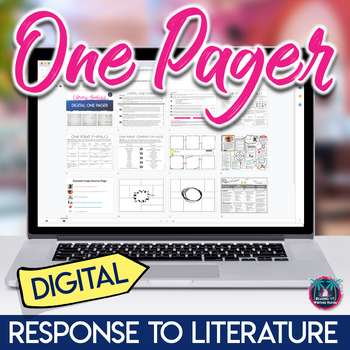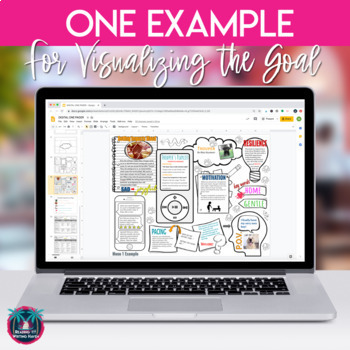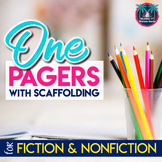Digital One Pager for Literary Analysis
- PDF
- Google Apps™

What educators are saying
Also included in
- So you want your students to analyze literature and informational texts, but you don't want to grade yet ANOTHER stack of essays. Why not take a creative approach with this one pager bundle? Students will be able to dig deep into literary analysis of both fiction and nonfiction texts, and they willPrice $12.50Original Price $15.50Save $3.00
Description
Looking for a tech-savvy, convenient way for students to respond to literature? Try a digital one pager! Students can be creative and resourceful as they think about what they have read, incorporate elements that are relevant both to the book and their lives, and practice important technology skills along the way.
DIGITAL ONE PAGER CONTENTS:
- A tech tidbits video to help students get started with Google Slides features
- A secure PDF version of the Google Slides included
- A link for a Google Slides presentation
- Directions for use
- 3 different choice menus to help students brainstorm what they would like to include on their digital one pager
- 5 templates in case students need help adding structure to their one pager, but they can also use a blank page in Google Slides or another online platform
- 1 example of a digital one pager you can share with students to help them visualize the end goal
- 1 rubric with editable text that teachers can use to provide feedback and that students can use to self assess
This digital one pager is intended to be used with literature, and the prompts included are aligned to Common Core Reading Literature standards. It is intended for use with middle school and high school students. Students can use it with any narrative text!
TOPICS INLCUDED FOR LITERARY ANALYSIS:
Students can respond to topics outside of those included on the choice board. Some of the included literary analysis elements are...
- theme
- plot
- mood
- description
- imagery
- figurative language
- word choice
- author's style
- setting
- point of view
- genre
- author's craft
- symbolism
- character motivation
- character development
- conflict
- dialogue
- action
- pacing
Is it editable?
- Rubric: The rubric in this resource is editable
- Choice Menus: The choice menus are partially editable in that you can change the descriptors in each box, but not the headings themselves. One slide is included at the end that has fully editable text options.
- Creation Templates: These components are secure to honor font and graphics designers' terms of use. You can, however, add additional slides in Google Slides and create new content to fit seamlessly into the assignment. Students also have the option of creating from a blank slide.
NOTE: The templates do not already have text boxes in place. One pagers can be abstract, and students need flexibility to insert text where they would like, adjusting angles and sizes as necessary. One of the built-in simple tech skills students will utilize while competing this assignment is adding their own text boxes, should they choose to use the templates in Google Slides.
Here's an INFORMATIONAL TEXT version of this resource.
If you find this resource useful, make sure to check out these similar products:
Mood and Tone Analysis Activity
Reading Comprehension Activities for Any Text
And more here!
Stay in touch:
~~~~~~~~~~~~~~~~~~~~~~~~~~~~~~~~~~~~~~~~~~~~~~~~~~~~~~~~~~
A Couple Tips:
* Be sure to click the "follow" button that is located next to my picture so that you can hear about sales and new products!
* By providing feedback on your purchased products, you can earn points, which ultimately translate into cash toward future purchases...bonus! Plus, I'd love to hear from you.
©Reading & Writing Haven
All rights reserved by author.
Duplication limited to single classroom use only.
Electronic distribution limited to single classroom use only.






